ECO-Vrindaban Board Meeting Minutes 01/18/2015
Mission Statement: ECO-Vrindaban promotes a simple, sustainable lifestyle centered on the care and protection of cows, local food production and the loving service of Lord Krishna, as envisioned by Srila Prabhupada, the Founder-Acharya of ISKCON New Vrindaban.
Participating Members of the ECO-V Board of Directors: Anuttama, Bhima, Chaitanya Mangala, Navin Shyam, Kripamaya, Madhava Gosh (partial), and Ranaka.
Participating Advisors: Radha-Krishna (partial)
Participating Managers: Mukunda
Recording Secretary: Jordanna
1. 2014 Finalized Operating Budget Approval
WHEREAS: The ECO-V Board wishes to review ECO-V’s income and expenses for the previous year.
RESOLVED: The Board approves a finalized operating budget of $277K for 2014.
2. 2015 Operating Budget Approval
WHEREAS: The ECO-V Board wishes to set projections of ECO-V’s income and expenses for the upcoming year.
RESOLVED: The Board approves an operating budget of $385K for 2015.
3. Board Seats Renewed
Bhima, Anuttama and Kripamaya were re-elected to three-year terms.
4. Navin Shyam’s Retirement as Chair/Board Member & Becoming an Advisor
WHEREAS: The ECO-V Board wishes to simultaneously honor Navin Shyam’s five years of service to ECO-Vrindaban and to keep him involved in a consultative capacity.
RESOLVED: The Board accepts Navin Shyam’s retirement as a Board Member and Chairperson and invites him to participate as an Advisor to the Board.
5. Bhima as Board Chair
WHEREAS: The ECO-V Board wishes to fill the vacant position of Chairperson.
RESOLVED: The Board selects Bhima as the ECO-V Board Chair for one year, ending with the January ‘16 meeting.
6. Update from Mukunda
Mukunda anticipates that he will relocate to New Vrindaban by mid-March.
Prabhupada’s Vision for New Vrindaban: Land of Krishna

Srila Prabhupada visiting Sri Sri Radha Vrindaban Nath at the original New Vrindaban farmhouse, June 28th 1976.
“To erect for the members and for society at large a holy place of transcendental pastimes dedicated to the personality of Krishna.” Seven Purposes of ISKCON – Srila Prabhupada, 1966
Click here to read the other purposes at the ISKCON.org website.
Devotees Remember Sankara Dasi on 30th Anniversary of Her Passing
By Madhava Smullen
Friends and family are remembering Srimati Sankara devi dasi — known for her deep love of her children and quiet dedication to Krishna’s service — as the 30th anniversary of her passing approaches on January 25th, 2015. On that day, the Sunday Feast program at ISKCON New Vrindaban will be held in her honor.
Born Sylvia S. Walker on January 5th, 1946, Sankara dasi was raised in Michigan. She first met ISKCON devotees in San Francisco in 1969, two years after the first ever Rathayatra there.
Returning to Michigan, she lived near the Detroit temple with her young family and visited often. In the early 1970s, she and her husband regularly invited devotees to hold weekend festivals at their farm near Ann Arbor.
In 1978, tragedy struck. Sankara was diagnosed with acute hypereosinophilic syndrome (HES), an extremely rare form of leukemia. She wanted to use whatever time she had left delving deep into her Krishna consciousness. So she moved into the Detroit temple full-time.
“When I first met Sankara and her children, in Detroit, she was a happy introspective person who held an extraordinary ability to see God everywhere,” recalls her friend Mrigaksi Dasi.
In 1980, when her eldest children had grown too old for the small devotee school in Detroit, Sankara moved to ISKCON’s New Vrindaban farm community near Wheeling, West Virginia, which she felt would be the best place for them.
Her own children weren’t the only ones Sankara cared for. From 1980 to 1983, she watched many young kids at the New Vrindaban nursery. From 1983 on, she taught kindergarten and first grade at the community’s Nandagram School to children from all around North America. Many of her former students remember her fondly as patient, sweet and caring.
Sankara also sewed for New Vrindaban’s presiding Deities Sri Sri Radha-Vrindaban Chandra and made their garlands daily, which was her favorite service.
“Sankara was easy to do service with; having an insightful and creative nature,” says Rupa Dasi, who worked with her on a sewing project. “She had a keen sense of focus for the project and really put all her heart into the service. She also was always very concerned for the welfare of her children. And this was a frequent topic of her talks. She knew her time was limited, and she was determined to use it to the very best advantage she possibly could on their behalf.”
During this time, Sankara had to go for heart surgery more than once due to the stresses her chronic condition placed on her heart. She also suffered from asthma. Yet Vidya Dasi, who lived and worked with her – both in the nursery and in garland-making – says that no matter how sick she got, Sankara always did her service with devotion and dedication.
“I don’t think we understood at the time how her failing health must have made her feel,” says Vidya. “And I’m thinking back, ‘How did she not complain, how did she keep up with us?’”
Even on the morning when Sankara went to the hospital for the last time, devotees remember her making sure her daily garland-making service would be covered and that her children would be looked after. It was this mood that encapsulated her life.
At the Intensive Care Unit, when doctors declared they couldn’t do anything more and invited her devotee friends in, Sankara’s vitals stabilized as she heard them chanting the Hare Krishna mantra. It was in this setting, surrounded by a number of her godsisters, that she finally left this world on January 25th, 1985.
Sankara Dasi is survived by her five children, Chaitanya Mangala, Makara, Veena, Sesa and Bhima; her five grandchildren, Kalindi, Airavata, Lauren, Hayden and Daniel; and her former husband, Danakeli Das.
Her family had her remains cremated, and scattered her ashes among the flower beds at Prabhupada’s Palace Rose Garden, one of her most cherished places. In 2005, on the 20th anniversary of her passing, they dedicated a Nama Samadhi in the form of a granite memorial bench in her honor at New Vrindaban.
The bench is situated along the scenic walkway that winds around the Kusum Sarovara Lake at the lotus feet of Gaura Nitai and in the shadow of Srila Prabhupada’s Palace of Gold. It serves as a place for people to relax and appreciate their surroundings as they follow a parikrama path through the holy dham.
Etched into the bench are the words: “In loving memory: Sylvia S. Walker – Sankara devi dasi. January 5th, 1946 – January 25th, 1985” and a quote from Sankara herself – “I am surrounded by the radiance, glory and richness of the Creator. In the final analysis, all things come from the same Source. We are all related; even the rocks are our brothers.”
“My mother was a sensitive, thoughtful and highly spiritual person who quietly and determinedly performed her services despite whatever obstacles were placed in her path,” says her eldest son, Chaitanya Mangala, who is a board member for both ISKCON New Vrindaban and ECO-Vrindaban. “To me, that’s a sign of a genuine devotee.”
“Moreover,” he continues, “She cared deeply for her children and was totally convinced that the fledgling Hare Krishna Society, and more specifically New Vrindaban, was the best place to raise us. Despite the hardships and shortcomings, I do appreciate the sincere attempts made by my mother and others of her pioneer generation. And, as we honor the 30th anniversary of her passing, I humbly dedicate my community building efforts in her memory.”
Prabhupada’s Vision for New Vrindaban: Simple Living
“It may be an ideal village where the residents will have plain living and high thinking.” – Srila Prabhupada, June 1968
Click here to read the rest of the letter at the Vanipedia website.
Sunday Feast in Honor of 30th Anniversary of the Passing of HG Sankara dasi at New Vrindaban
Brief Memorial Service in Honor of the 30thAnniversary of the passing of Her Grace Sankara dasi
Sankara dasi-January 5th, 1946 – January 25th, 1985
When: Sunday Jan. 25, 2015
Time: 1:30 PM, Before the Sunday Feast
Where: RVC Temple Room
If you had the honor of knowing this very sweet Brijabasi, Sankara dasi, or just want to get inspired by hearing a bit about her, please attend this short talk in her memory.
New Vrindaban’s Transcendental Throwback Thursday – 01/22/2015
Our final week’s challenge (at least for a now): Who is this Brijabasi?
Bonus challenge: What’s the occasion connected with this photo?
What to do: Post your guesses on the “who, what, when, where & why” in the comment section at the New Vrindaban Facebook page.
Prabhupada’s Vision for New Vrindaban: Yukta Vairagya as Motto
“The exact adjustment is in Vaishnava philosophy, which is called Yukta Vairagya, means that we should simply accept the bare necessities of our material part of life, and try to save time for spiritual advancement. This should be the motto of New Vrindaban, if you at all develop it to the perfectional stage.” – Srila Prabhupada, June 1968
Click here to read the rest of the letter at the Vanipedia website.
New Vrindaban’s Transcendental Throwback Thursday – 01/15/2015
This week’s challenge: Who is this striking young man?
Bonus challenge: What is he doing and when was the photo taken?
What to do: Post your guesses on the “who, what, when, where & why” in the comment section at the New Vrindaban Facebook page.
New Vrindaban devotee Gopisa’s India Journal: “When you eat this you will never take birth again”.
This is the 4th and last in a series of entries from Gopisa das on his recent trip to India.
DAY 7
Dearest family,
Today was a very special day. We went to Srimati Radharani’s temple for mangal aroti. I was pushed to the middle quite close and had a wonderful view of Sriji. Sacinandana Swami was also there and after the services he offered me some rock candy maha prasad with the following words, “When you eat this you will never take birth again”. I also cleaned Sriji’s floor with a new chadar for Abinanda Prabhu and collected some flower petals as well. Hope customs doesn’t go crazy on our way home.
We arrived in Vrindavan today. I’ve seen pictures of the deities here but photos don’t do Them justice. Also Srila Prabhupada’s Samadhi was very emotional and quite spectacular!
This was quite a day…
I’m headed to an internet cafe to send these emails out. Jaya Krsna’s phone has only now started to work…….very strange indeed!
Love and Krsna to you all! g
DAY 8
Dearest family,
Today we somehow missed the alarm and didn’t get up till 4:30. Caught the end of mangal aroti, Tulasi puja and japa, then greeting the Deities. They are spectacularly beautiful! Saw Veda Vyasa Swami, he didn’t recognize me at first then gave me a long twirling hug.
Saw Srila Prabhupada’s room in the Krsna-Balarama temple, another emotional experience. Went to Loi Bazaar. Got clothes and deity plate set…it’s very nice! Will get incense next trip. Had my watch stolen. Jaya Krsna lost his glasses to the monkeys, cost 100 rupees to get them back. I was hit three times but all failed. No one’s laughing at my strap and hat now! Of course pride in this cost me my watch!
We visited a couple temples including Radha Damodara where Srila Prabhupada’s room is. Chanted japa there. Saw Kesi ghat…very sad to see all the pollution in the Jamuna River.
The president of India is coming tomorrow for a new temple opening so lots of cops and the streets will be closed for a while. We will plan our day around them. Till tomorrow my precious ones.
Love and Krsna to you all! g
Prabhupada’s First Visit to New Vrindaban – Spring 1969
A Swami’s Dream Comes to Life: Prabhupada’s First Visit to New Vrindaban
Written by Madhava Smullen. Archival Research by Chaitanya Mangala.
New Vrindaban, May 20th, 1969 – A small cluster of devotees waited at the entrance to the rural West Virginia property, hearts beating with anticipation. As the Lincoln town car turned the corner, they hit the gravel driveway in obeisance.
Srila Prabhupada stepped out of the car. “Oh, there are many waiting here,” he said, looking around with a smile that lit up his entire face. “Jai Sri Krishna!”
The devotees smiled back. They had been waiting for this moment since they first told Prabhupada in March of the previous year that they were negotiating with landowner Richard Rose.
From then on, Srila Prabhupada had been writing streams of enthusiastic letters to them, outlining his ambitious plans: that the land be called New Vrindaban; that “cow protection should be [its] main business;” that it be “a new place of pilgrimage for you Western devotees” and “an ideal village where the residents will practice plain living and high thinking.”
Even before Hayagriva told Prabhupada that the 99-year-lease had been signed on August 8th, 1968, he went as far as to say, “I may permanently stay there and try to serve you in constructing a New Vrindaban city in West Virginia,” expressing that it would be the ideal place for him to spend the rest of his life translating spiritual literature. And now he was here.
Excitedly, the devotees loaded Prabhupada’s luggage into the old powerwagon they planned to drive him up the dirt road to the farm in. As Srila Prabhupada took his seat, they started it up. The vehicle lurched, coughed out smoke, and promptly died. They tried it again. And again. Each time, it cut out. The devotees, mortified, looked at their guru. This wasn’t how they had hoped his first visit would go.
“Why not walk?” he said, matter-of-factly. It was a subtle way of pointing out, right from the get-go, that the simple life was superior to that of so-called modern “convenience.” And despite the devotees’ protests that it would be too hard on him, he set off at a smart pace up the ominously named “Aghasura Road,” a twisting, turning two-mile trail riddled with potholes and ruts.
As usual, Prabhupada’s much younger disciples were left huffing and puffing as they struggled to keep up with him. Head held high, he casually discussed the trees, flowers and vines along the way, interested in everything and finding ways to relate it all to Krishna consciousness. In just his first few minutes at New Vrindaban, he was already teaching his disciples his key instruction for the project, the glue that held it all together: loving Krishna.
At last, Prabhupada and the devotees rounded a curve in the road, and could see a clearing on the ridge ahead. There, amidst the lush green of the West Virginia countryside, was a small farmhouse, a barn, and the hand-built one room cabins that devotees resided in.
After washing and appreciating the devotee’s simple lodgings, Prabhupada sat down on a dais set up for him beneath a willow tree’s leafy cascade. Devotees brought him fruit, local tulip honey and fresh milk from New Vrindaban’s first cow, Kaliya. Then they sat before him in a semi-circle on the grass, looking up at him expectantly as he sipped it.
“I haven’t tasted milk like this in fifty years,” he said in wonder.
As Ranadhir Das paraded the milk’s maker, Kaliya, before him, he admired her, commenting that the Vedas calculate a man’s wealth in cows and grains.
Encouraged, the devotees told him that they hoped to get their own hive next year. “Then you will have the land of milk and honey complete,” Prabhupada said. “That is nature’s design, that everything is given complete for a happy life. We don’t require artificial amenities. All we need to realize Krishna is here.”
Prabhupada again made the same point when Lavanga-latika Dasi brought him a silver cup of water, freshly drawn from the well. “Oh, it is very sweet water,” he said. “That is Krishna. That is the way of remembering Krishna. It is so easy here at New Vrindaban.”
He then told the devotees how the morning sun at New Vrindaban could remind them of Krishna’s bodily effulgence; the cow of Krishna’s name Govinda, one who gives pleasure to the cows; and the countryside of His statement in the Gita that He is the sweet fragrance of the earth.
For Prabhupada, seeing New Vrindaban come to life was like seeing a dream come true. He had been planning a community like this since long before he had even travelled to the United States from India. While alone in Delhi back in 1956, he had written a series of articles in his Back to Godhead magazine, detailing his vision for a community where people would live a simple life based on the teachings of the Bhagavad-gita. And right from the beginning of ISKCON, he often told his disciples he wanted them to start a farm project. And they had done it! Prabhupada looked around at them with a broad grin that was almost childlike in its enthusiasm.
Sometime later, as he continued to chat with the devotees and look around the property, Paramananda Das finally succeeded in getting the powerwagon up the hill. Devananda and Prabhupada’s servant Purushottam carried Prabhupada’s luggage, including a big trunk packed with manuscripts, into his room. They then set the room up to his specifications, with a mattress on the floor and his Radha-Krishna Deities in a small cherrywood room attached to the bedroom.
Prabhupada liked his new room, with its two windows that opened out onto a view of the big willow tree. Quickly, he made himself at home, and settled right into his usual routine.
Always revolving around Krishna, Prabhupada’s day would begin in the wee hours as he rose to dictate his books. In his memoir, The Hare Krishna Explosion, Hayagriva Das recalls waking up at 2:00am and seeing the light on in his room.
At 4:00am, Prabhupada would attend mangal-arati, watching the Deities intently and striking his trademark steel gong as twenty devotees crammed into the small temple room on the first floor of the farmhouse. He would then perform arati to his own Radha Krishna Deities, and chant his rounds in his room while the devotees did the same downstairs.
After breakfast, Devananda would massage him with mustard seed oil outside in the morning sun. Throughout the day, he would dictate letters, take walks, and hold meetings at his favorite spot beneath a persimmon tree with the devotees gathered around him on the grass.
In the evening, he would lead kirtan in the temple room, encouraging the devotees to dance. Then he’d give a lecture, darshans in his room, and finally rest, before beginning it all again.
The days passed, lengthening gradually, bees buzzing lazily against blue skies and brilliant green trees, brief showers falling in the afternoons. Meanwhile, Srila Prabhupada built his fledgeling community, guiding the devotees as they sat with him beneath the persimmon tree.
Sometimes his instructions were practical. He told his disciples that he would show them how to build simple mud houses at practically no cost; that they should buy the adjoining property and build a bridge “so that gentlemen will come;” and that they should call their waterfall Keshi Ghat, their hills Govardhana, and their lakes Radha-Kunda and Shyama-Kunda.
He sketched his own design of a two-wheel cart for workhorses. He talked about protecting cows and bulls as father and mother, and how they could provide all transportation, fuel, and dairy needs. And he laid out plans for establishing the varnashram system and building temples, a guesthouse, and living quarters. He even discussed a gurukula for spiritual education, although there were only three boys in the community so far.
His ambition amazed the devotees, and his strength and vision kept them positive. “Someday you may see that it’s a great asset,” he told them when they complained about the pothole-ridden Aghasura Road. “Someday there may be many cottages by the road, and people will be driving up to see. Don’t be discouraged.”
At other times, Srila Prabhupada’s instructions were more philosophical. He stressed the importance of chanting and reading, citing the six Goswamis of Vrindavana as role models. And he pointed out how the hard work of simple country life was perfect for developing Krishna consciousness.
“They are hypnotized by Krishna,” he commented once, as he watched the young men work in the fields. “That is samadhi. Samadhi doesn’t mean inactivity. It means being completely absorbed in Krishna. Anyone chanting Hare Krishna is in samadhi. Anyone cooking for Krishna or writing for Krishna or working in the field for Krishna is in samadhi because the consciousness is: ‘I am doing this for the satisfaction of Krishna.”
Most of all, however, Prabhupada stressed how important it was for New Vrindaban residents to communicate and cooperate with each other, always with “Loving Krishna” as the connecting thread.
“You must jointly work,” he said during a conversation with Kirtanananda, Hayagriva, Shyama Dasi and other managers on June 9th. “There may be sometimes disagreement, but you should settle up. Otherwise how you can make progress?”
“Everyone will cooperate,” he added. “Why not? It is Krishna’s. Nobody is actually the in-charge. Krishna is in charge. We are simply assisting Krishna. In that spirit we shall work…. Everyone should think that ‘I am acting to satisfy Krishna.’”
By June 14th, now in his fourth week at New Vrindaban, Prabhupada was looking robust and seemed to be greatly enjoying the rest, fresh air, spring water, cow’s milk and of course the devotees’ association. They, too, were full of bliss in his.
But on June 18th, upon receiving a letter from Mukunda about the progress his disciples were making in London, Prabhupada decided he must fly to England immediately. The New Vrindaban devotees, who had been hoping he would spend the entire summer with them, were crestfallen.
On June 22nd, Prabhupada’s last night in New Vrindaban, all the devotees crowded into his room, eager to catch his last words. Amidst some light talk of his upcoming travels, he confided in them that personally, he would like to stay in New Vrindaban and finish translating Srimad-Bhagavatam.
As the evening wore on, six-year-old Dwarkadish began to nod off, as did his friend, five-year-old Ekendra. Prabhupada, who had developed a playful rapport with the two during his stay, smiled.
“So, you are feeling samadhi, Mr. D. D. D. ?” he asked. “All right. Let him take rest. And you are also feeling samadhi, Mr. Ekendra? You are very good boys. You can also take rest.“
At this, the devotees sensed that it was time to let Prabhupada himself take rest. But they remained in his room for some time more, hoping to soak up every precious moment they could. At last, they all offered obeisances and left his room.
The next morning, Srila Prabhupada left as he had come, striding down Aghasura Road at a brisk pace, his suitcases following him on a horse-drawn cart. As he got into his car and pulled away, the devotees saw him off with chants of “Hare Krishna!” and “Jaya Srila Prabhupada!”
Watching until long after his car had faded into the distance, they thought about how they could make this New Vrindaban community work, if only they followed Prabhupada’s instructions to love Krishna, live simply and work cooperatively together.
“I will also come again,” he had said just two nights before. “I like it so much here, but first I must finish the little work still remaining. I want to go once to London and Germany. Then I’ll entrust the whole preaching work to you. So do not become too anxious. With cooperation, everything will be possible. Krishna will help you.”
Remembering these words, the devotees turned back to continue their service of developing their transcendental farm community, and to begin their eager wait for Srila Prabhupada’s next visit.
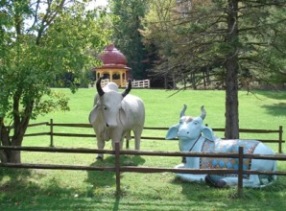
Welcome to Brijabasi Spirit
Thank you for taking the time to visit the New Vrindaban community blog. Think of visiting our blog as making a virtual pilgrimage.
Hare Krishna Hare KrishnaKrishna Krishna Hare Hare
Hare Rama Hare Rama
Rama Rama Hare Hare
"May cows stay in front of me; may cows stay behind me; may cows stay on both sides of me. May I always reside in the midst of cows."
Hari Bhakti-vilas 16.252
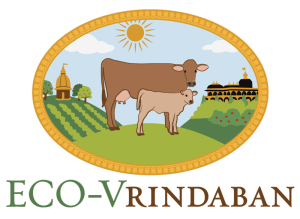







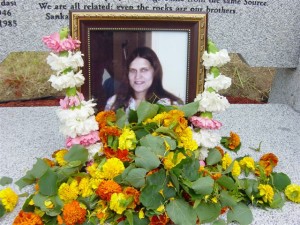


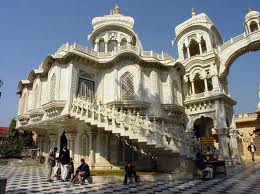
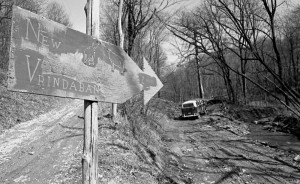
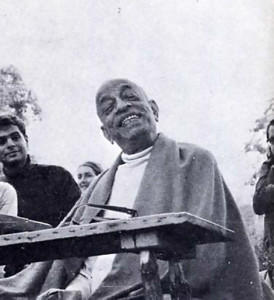
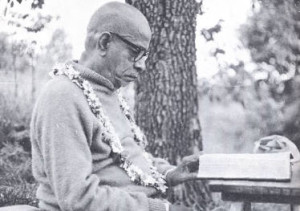
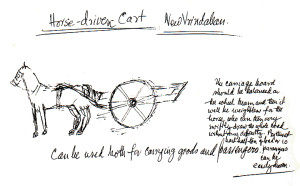
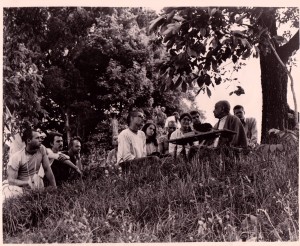




Recent Comments